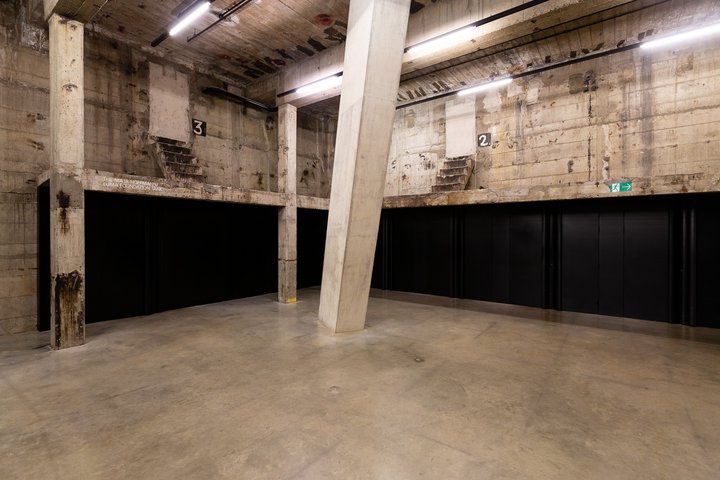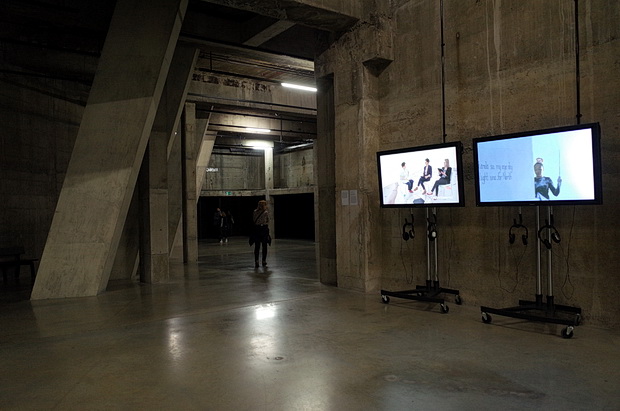

“It’s too bad you didn’t do the Olympics,” I offered by way of praise. As I sipped a sickly sweet strawberry champagne, I was introduced to Brian Boylan, chairman of Wolff Olins, the company that brilliantly rebranded Tate over a decade ago. (“It’s like Speer at the Oscars,” someone muttered.) The audience featured an intergenerational mix of the city’s most renowned artists-including Michael Craig-Martin (1970s), Anish Kapoor (’80s), Rachel Whiteread (’90s), and Jeremy Deller (’00s)-as well as curators, dealers, academics, critics, and directors of other local spaces. VIPs entered a purple-lit Turbine Hall, with spotlights sweeping from floor to ceiling. Last Monday night, the museum launched a fifteen-week festival programmed by Catherine Wood (curator of performance), Stuart Comer (film), and Kathy Noble (interdisciplinary projects). Once the repository of a million gallons of oil, these vast concrete cylinders have been transformed-by Herzog & de Meuron, who also converted the disused power station that now holds Tate Modern’s principal galleries-into spaces dedicated to performance, installation, and experimental film. “They have three moves: the pull, the jerk, and the snatch.”įor the London art world, however, the summer’s main event took place last week, when Tate Modern opened the Tanks, a new underground extension with a 225,000-square-foot footprint.

“I’m going to women’s weight lifting,” bragged a publisher friend. While many Londoners are dreading the crowds, those with tickets can’t wait for the games to begin. THE OLYMPICS DON’T KICK OFF in London for another few days, but they’re already inescapable: The Flintstones-meets-street-art logo is visible everywhere, stamped on lamppost banners and smothering tube signs. Right: Tate director Sir Nicholas Serota. Left: Tate Modern curators Stuart Comer, Catherine Wood, and Kathy Noble.


 0 kommentar(er)
0 kommentar(er)
